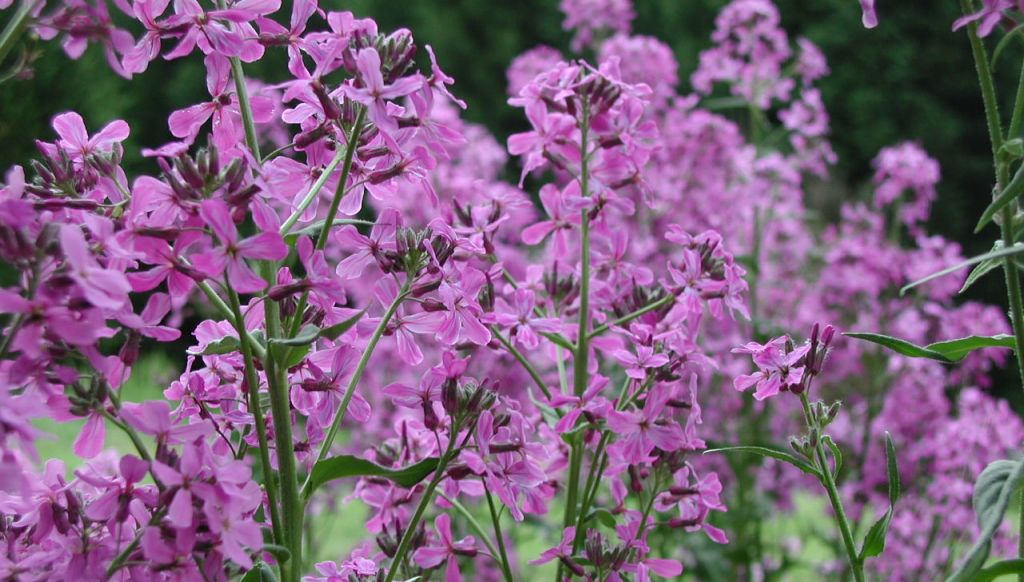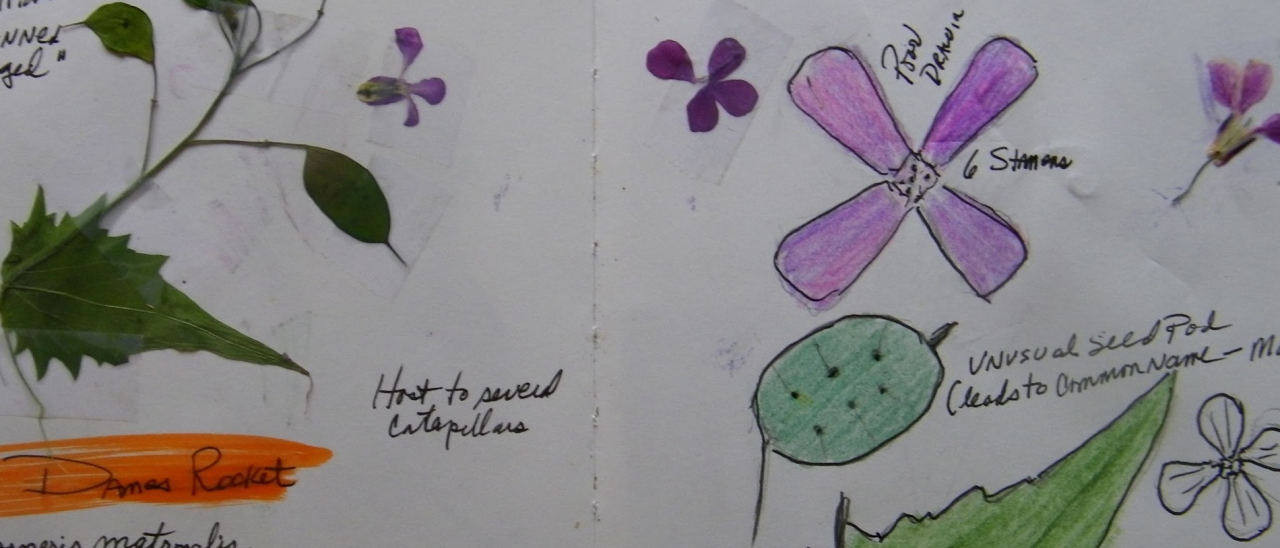The author’s interest in botany extends to weeds. A weed isn’t a weed when I like it, grow it, study it, draw it, and write about it. My objective is to show that weeds can be interesting if one takes the time.
I plant escapes from a garden, it is called a weed. It has a seed dispersal system that allows it to spread. Dames Rocket is a native of Eurasia. How it reached America can only be explained in general terms. It may have been purposely carried here by migrants who wanted to have artifacts in their new home. They planted seeds; they grew, escaped, and spread widely. It can be found in roadside ditches, dumps, and open woodland settings.
Hesperis matronalis is the scientific name. A common name is the money plant. It got this name because the seed pod is the size of a quarter, it is flat, and tan.
The beauty of the plant is its flower. Its dark, purple-lavender is attractive. I found several plants in late spring and collected one to take home for more detailed study.

Photo by Berean Hunter from Wikimedia Commons
It is a member of the mustard family and is a biannual. Four states have deemed it a problem. Colorado labels it a Management issue, Connecticut and Massachusetts ban it, and in Wisconsin, it is restricted. The remaining states tolerate it and have no laws in its regard.
It has a lot of common names. Common names for any species can lead confusion whereas scientific names don’t. The following list explains:
Damask Violet; Dames Violet; Dame’s wort; Dame’s Gillyflower; Queens Gillyflower; Summer Lilac; Sweet Rocket; Mother-of-the evening; Winter Gillyflower.

Leave a Reply